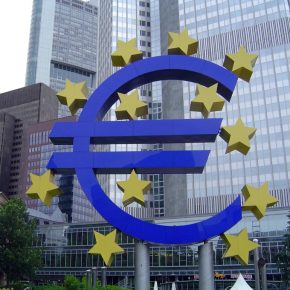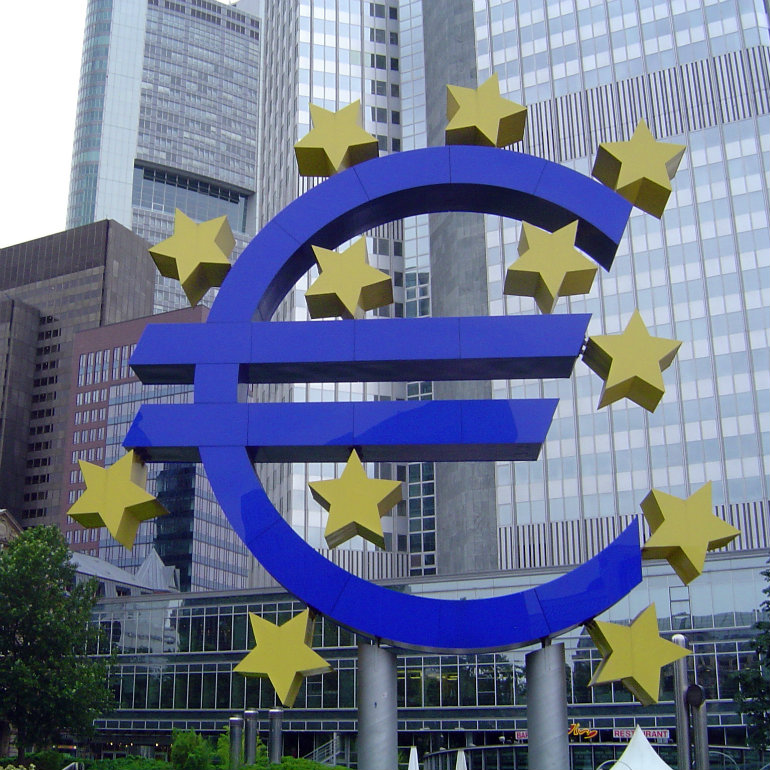
(Paul!!!, CC BY-ND)
However, the declining rate of economic growth and the increasing differences between the individual countries prove that this is not the case – believes Professor Leon Podkaminer from the Vienna Institute for International Economic Studies. His diagnosis is that despite the current improvement of the economic situation in most of the countries and the development of new institutional solutions, designed to help prevent future crises, the Eurozone has structural flaws permanently dividing the strong economies of Germany and several neighboring countries, and the economic peripheries, including in particular the countries of Southern Europe.
„These differences cannot be eliminated with one instrument, that is the euro, because its use has different effects in the individual countries. Having the same interest rate for the entire Eurozone perpetuates deflation in the countries where it occurs, i.e. in Germany, and similarly, perpetuates inflation where it is present, that is, in the countries of Southern Europe”, said Prof. Podkaminer.
This leads to a build-up of savings in the German economy and of debt – eventually leading to recession (since in order to reduce debt it is necessary to enforce domestic savings) in the economies of Italy or Spain, not even to mention Greece. These economies, and in particular Italy, had been developing much faster before the Eurozone was created and had been able to gradually catch up with Germany’s economy. This process was stopped through the introduction of an (internally) fixed euro exchange rate.
Among the causes of the permanent imbalance Podkaminer lists the economic paradigm adopted in the early 1970s, involving a departure from stricter regulations in favor of systematic deregulation, monetarism, reduction of wage costs, as well as dogmas concerning deficits and public debts. There was also a rebirth of mercantilism in the new form of „hoarding” trade surpluses allowing countries to expand their economic influence. One of the side effects of that is a decline in the share of wages in costs, which in turn leads to weaker investment („Why invest if there are no new buyers, as they have less money”) and to the growing social inequality between those who live off work, and those who live off the growing profits.
This is beneficial for the German economy, but unfavorable for the countries of Southern Europe, boosting the existing disparities. In Germany – admits Podkaminer – there are few people willing to discuss the fact that the euro creates a structural problem. The trauma of hyperinflation of the 1920s is still alive there. The need to save money and to maintain discipline of labor and wages are also firmly rooted in the mindset of German people. There is also widespread public belief that Germany is financing countries of Southern Europe, which are recklessly borrowing money, although in reality Germany is covertly subsidizing its own production and exports, because the debtors are buying German products. And it is actually Europe that is helping Germany’s economic growth.
In this respect, the Polish economy is closer to the German economy. If there ever was a division of the Eurozone, two separate blocks would emerge: the great German economy, understood as an area fully integrated with the economy of Austria and the Netherlands, and a group of the other countries. Although it does not even belong to the Eurozone, Poland’s economy, just as the economies of the remaining countries of the Visegrad Group, would end up closely linked with the economy of its Western neighbors. This is determined by the massive amount of German investment in Poland and the real economic ties between our countries.
Will there be a division of the euro area? Podkaminer does not offer a definitive answer in this regard, focusing instead on the diagnosis and the reasons for the increase in economic inequality. He presents several scenarios of the further development of the situation, but ultimately leaves a choice between „things will work out somehow”, and a more or less Utopian vision of a strict fiscal and political integration of the European community. The Utopian nature of such a scenario stems from Podkaminer’s assessment that in Europe it is hard to imagine – as is the case e.g. in the USA – the financing of certain regions at the expense of others, or huge migrations in search of employment in other countries.
In the discussion, the pessimistic diagnosis of Professor Podkaminer was toned down by Professor Jerzy Osiatyński, a member of the Polish Monetary Policy Council (who also cooperates with the Viennese economist). Prof. Osiatyński pointed out that the previous orthodox position adopted by Germany with regard to the further development of not only Germany, but also Europe as a whole, is slowly changing. “In Germany wages are rising again. Also, we shouldn’t exaggerate the role of Germany in Italy’s trade deficit. There was almost always a deficit there,” believes Osiatyński.
Whether the Eurozone will actually fall apart depends to a great extent on the practical side of things – i.e. how this process could be implemented. This was pointed out by Dobiesław Tymoczko, Deputy Director at the NBP Financial Stability Department: “The very news that Italy were to leave the Eurozone would cause the markets to raise the yield of Italian debt securities. This would result in an increase in debt that would have to be paid off in a quickly appreciating euro”.
This is the same reason why Greece fought tooth and nail against leaving or being thrown out of the euro area.
All of this taken together means that despite the pessimistic diagnosis the most probable scenario for the Eurozone is sticking with the choice of „things will work out somehow”.
Professor Podkaminer, a Polish economist who has been working in Vienna for many years, presented his views on the prospects of European economic integration, in particular in the Eurozone, during a scientific seminar held at Poland’s central bank, NBP.


